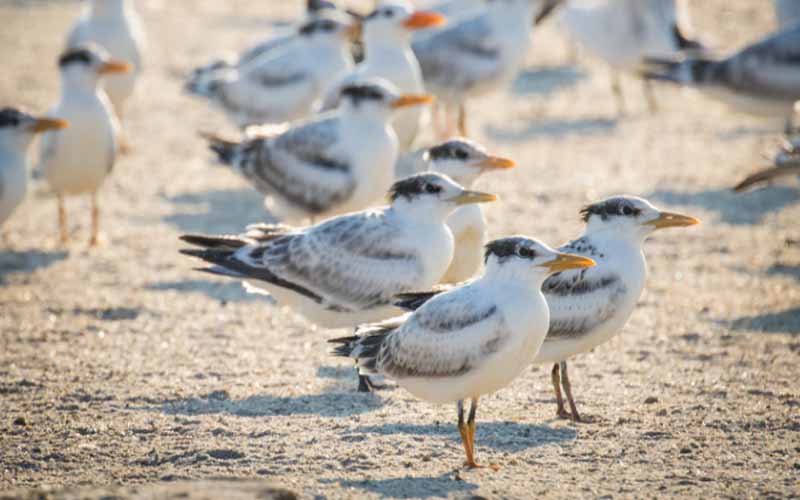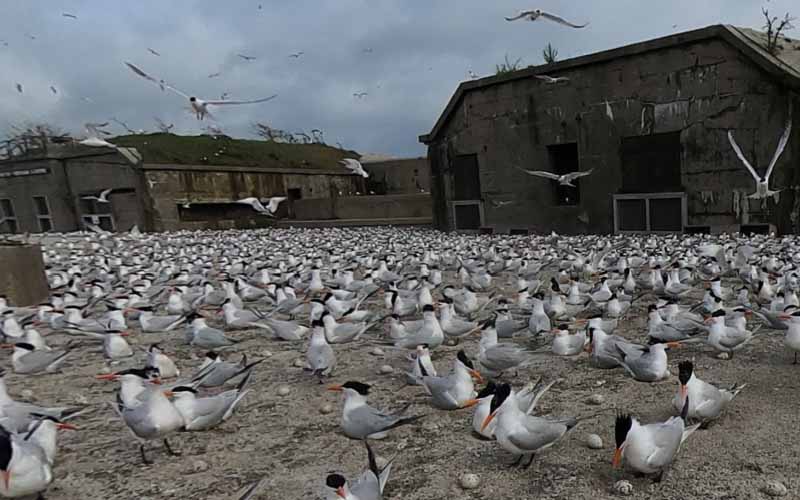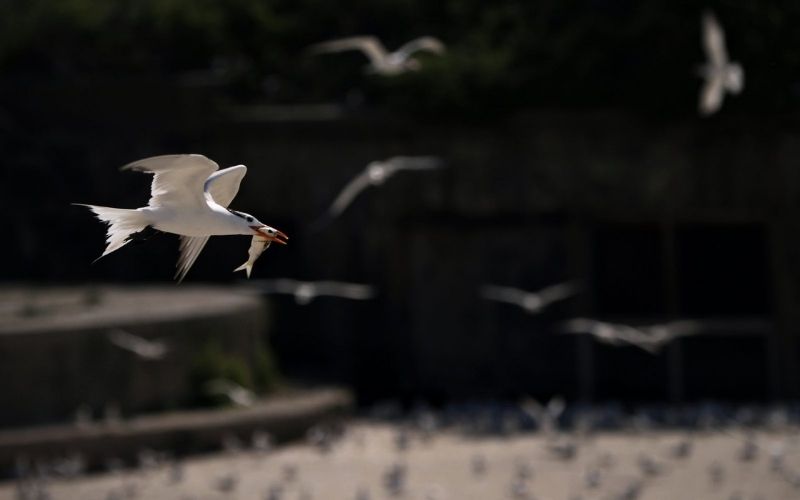In 2017, the Virginia Department of Transportation (VDOT) initiated its single largest construction project ever — expansion of the Hampton Roads Bridge-Tunnel. While this critical infrastructure is vital to the movement of people, goods and services into and out of the Tidewater region, one of the anchoring islands had come to support Virginia’s largest colony of seabirds. In a groundbreaking conservation success story, the DWR and partners have been able to provide alternative nesting habitat to the thousands of birds that were displaced by this construction and remain committed to providing nesting habitat for the colony in the years to come.

History of Seabird Conservation at Hampton Roads
Today, the HRBT complex supports the largest breeding seabird colony in all of Virginia. But did you know that the history of seabird conservation at this site actually dates back to the early 1980s?
Learn moreWhat are Seabirds?
Nine species of seabirds breed in Virginia, including several species of terns and gulls, black skimmers, brown pelicans and double-crested cormorants.
Learn moreWhat is DWR’s Role?
DWR is working to provide temporary habitat for the displaced seabirds as well as a permanent solution for the colony’s future.
Learn morePartners
We couldn’t accomplish this massive endeavor alone! A wide array of partners have come together to provide this new nesting solution for the HRBT seabird colony.
Learn moreHow to View the HRBT Seabird Colonies
Even though the HRBT embayment is closed to the public, there are other ways to view these birds.
Learn moreReport a Banded Seabird
Have you seen a banded seabird? Help us with data collection by reporting that observation.
Submit a ReportLatest Updates

Restoring Bird Habitats While Sustaining Ours
Understanding the importance of providing a safe alternative habitat, several agencies teamed together to investigate the feasibility of using dredged sand and mud. Read more…

DWR Wildlife Biologist Ruth Boettcher is 2022 William T. Hesselton Memorial Award Recipient
While Ruth has realized many tremendous accomplishments during her tenure at DWR, perhaps her most recognized is her work to relocate Virginia’s largest seabird colony, displaced from its decades-old nesting site by the Hampton Roads Bridge-Tunnel Expansion Project. Read more…

Can National History and Natural History Co-Exist?
This past spring, thousands of sea birds built nests on Fort Wool – a property owned by the state. Visible from the staging site for the Hampton Bridge and Tunnel Project's staging site, you can... Read more…

Large Seabird Colony Calls Decommissioned Civil War-Era Military Installation on HRBT’s South Island Home
The DWR's partners at the Virginia Tech Shorebird Program are optimistic that 2022 may set a new record for the number of gull-billed pairs nesting on the newly provided habitat. Read more…

HRBT September Update: So Long and Thanks for all the Fish!
In the last blog of the 2021 HRBT seabird colony season, encouraging news about this year's results and some exciting plans for the future. Read more…

HRBT August Update: Empty Nest Syndrome
Welcome to the August update in our monthly series highlighting the Hampton Roads Bridge-Tunnel Seabird Colony! Read more…


